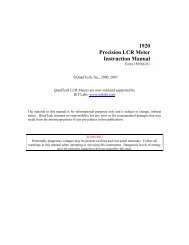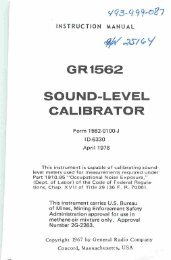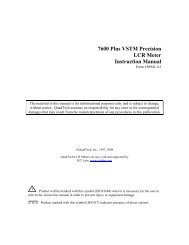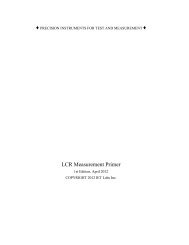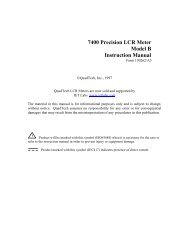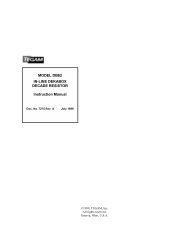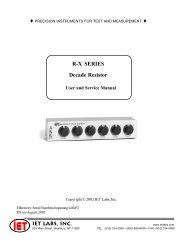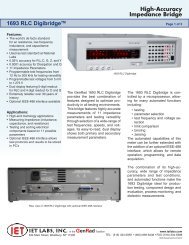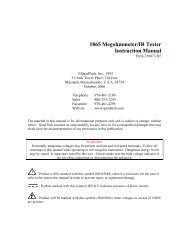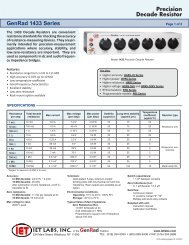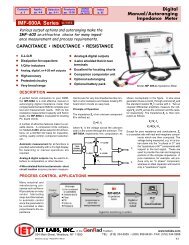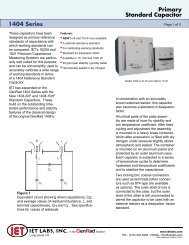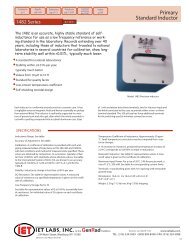Handbook of High Speed Photography - IET Labs, Inc.
Handbook of High Speed Photography - IET Labs, Inc.
Handbook of High Speed Photography - IET Labs, Inc.
You also want an ePaper? Increase the reach of your titles
YUMPU automatically turns print PDFs into web optimized ePapers that Google loves.
4-3). If the reflectors are placed 6 inches from the spindle the effective<br />
separation is 2.0 feet. The bellows-extension correction is determined<br />
from Figure 4-5.<br />
0*v A ( 1 Q\<br />
Bellows Ext. = '—— = 3, Image Size = 2,<br />
and the correction factor K « 0.3-<br />
The addition <strong>of</strong> a second lamp complicates the calculation, but<br />
a reasonable first-order guess is that it will cause nI~2 (a 40%) increase<br />
<strong>of</strong> f/number. The calculated f/number would be:<br />
f =(0.3) ^~ (1.4) =18.9,<br />
which can be approximated, or the nearest indicated number (f/16 or<br />
f/22) may be used.<br />
A final consideration is the shutter speed.<br />
This must be fast<br />
enough to prevent ambient-light exposure, which appears as blur and<br />
reduced contrast in the final photo. The shutter must be fully open for<br />
at least a full cycle <strong>of</strong> the spindle (see paragraph 5-3.1). In this case,<br />
one revolution takes<br />
1 1<br />
25°>000 - 4^00 SCC<br />
60<br />
and the between-the-lens shutter speed may be the fastest indicated<br />
(e-«- msec)*<br />
The required f-stop must be calculated for pictures to be taken<br />
on negative film. In this example Kodak Royal-X Pan film with an ASA<br />
rating <strong>of</strong> 1250 is used. The required camera f-stop is:<br />
f =(0.3) y(U) = H.5<br />
If depth-<strong>of</strong>-field is unimportant, a finer-grained, slower speed<br />
film can also be employed with correspondingly lower f-stop setting.<br />
57



